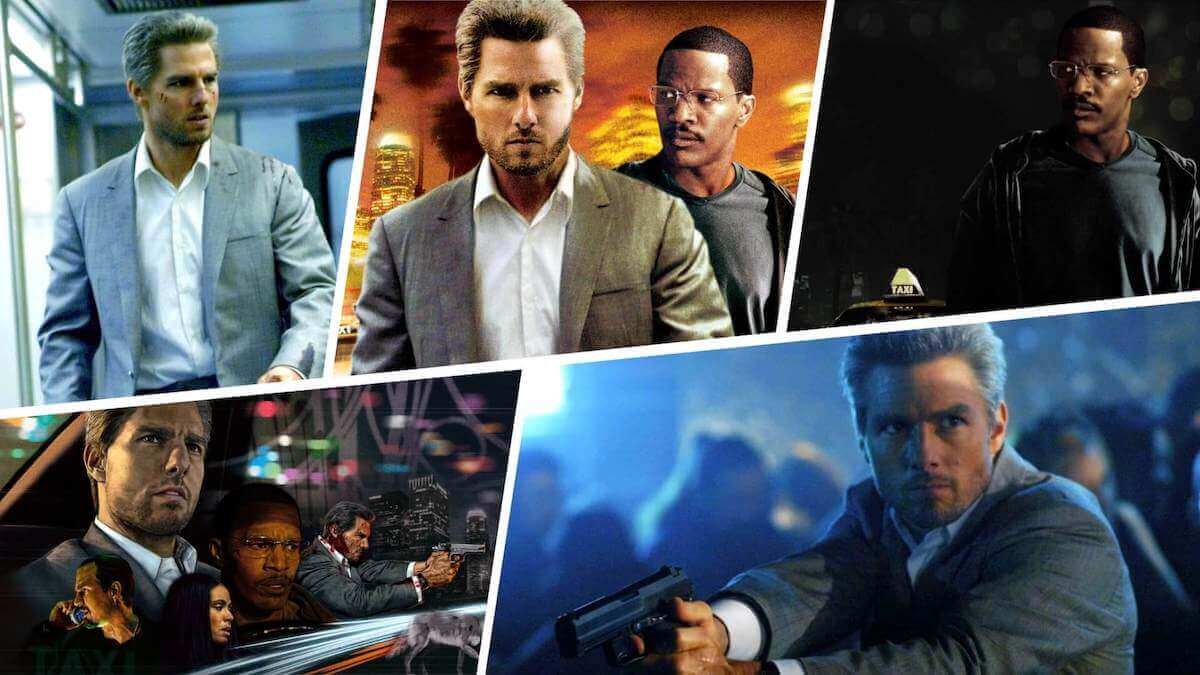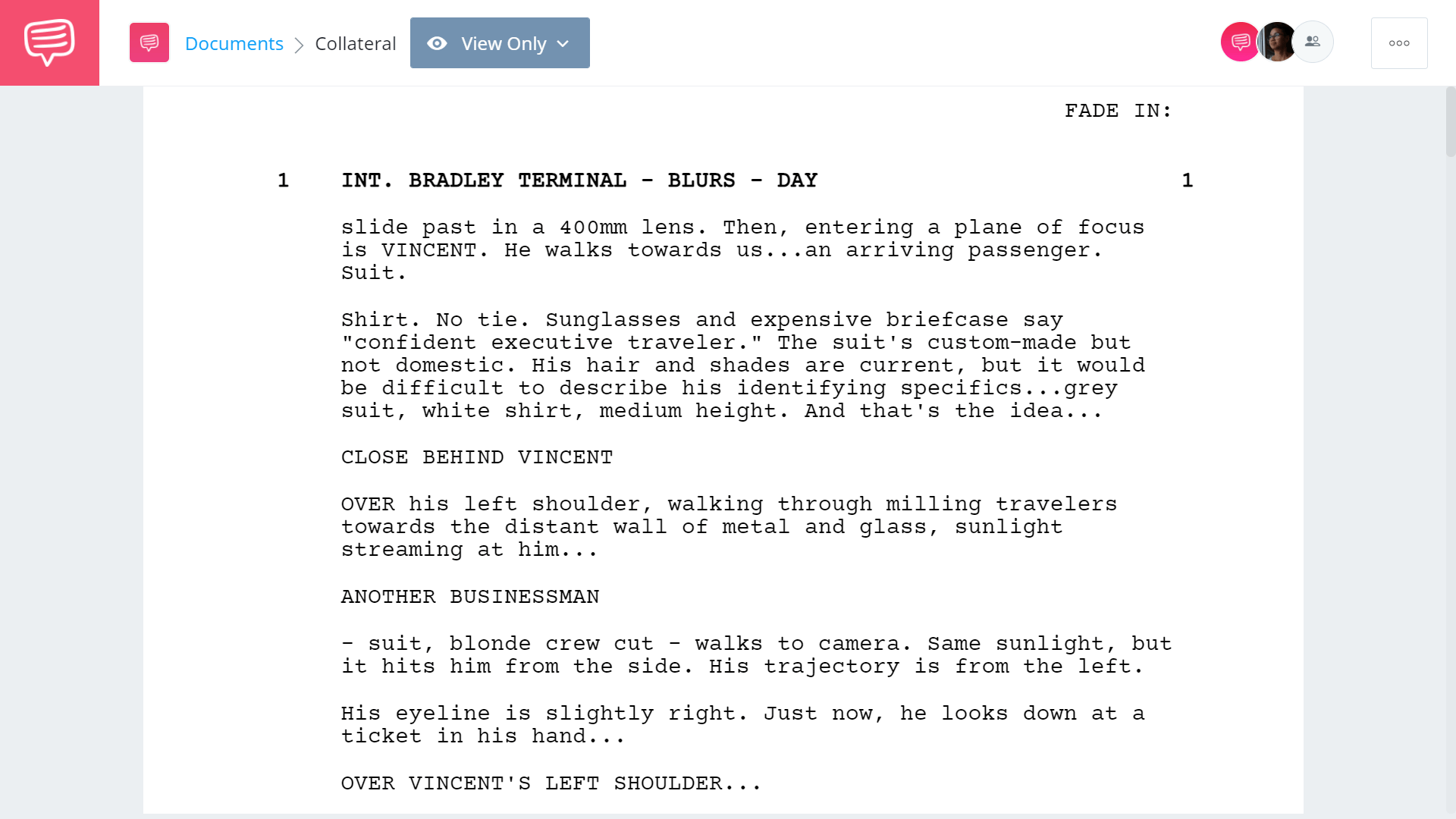Few filmmakers are able to imbue simple, grounded genre stories with as much dramatic heft and visual style as Michael Mann. One of the “neon-noir” innovator’s greatest cinematic achievements is his action-thriller Collateral (2004). If Heat was Michael Mann’s masterwork of the ‘90s, then the Collateral movie was his masterwork of the ‘00s and, arguably, his last great film to date. Collateral was Mann’s most successful film in terms of box office earnings. The film was made for a budget of approximately 65 million dollars and brought in a massive return of over 220 million dollars. Let’s take a look back at Collateral and examine what made it work so well.
What is the movie Collateral about
The story and style of Collateral
So, what is the movie Collateral about? Collateral makes use of a simple, clever premise that allows ample opportunity for both action and character exploration. To take a closer look at how the opening minutes of Collateral set everything in motion efficiently, we can bring the screenplay into StudioBinder’s screenwriting software.
Follow the image link to download a complete PDF of the script.
Collateral movie screenplay
The Collateral movie cast is one of its greatest strengths. The protagonist, played brilliantly by Jamie Foxx, is a LA cab driver named Max who dreams of owning his own limousine business. But Max has been stagnating in his dead-end job for years. He has the ambition but not the drive or the follow-through. That’s where Vincent comes in.
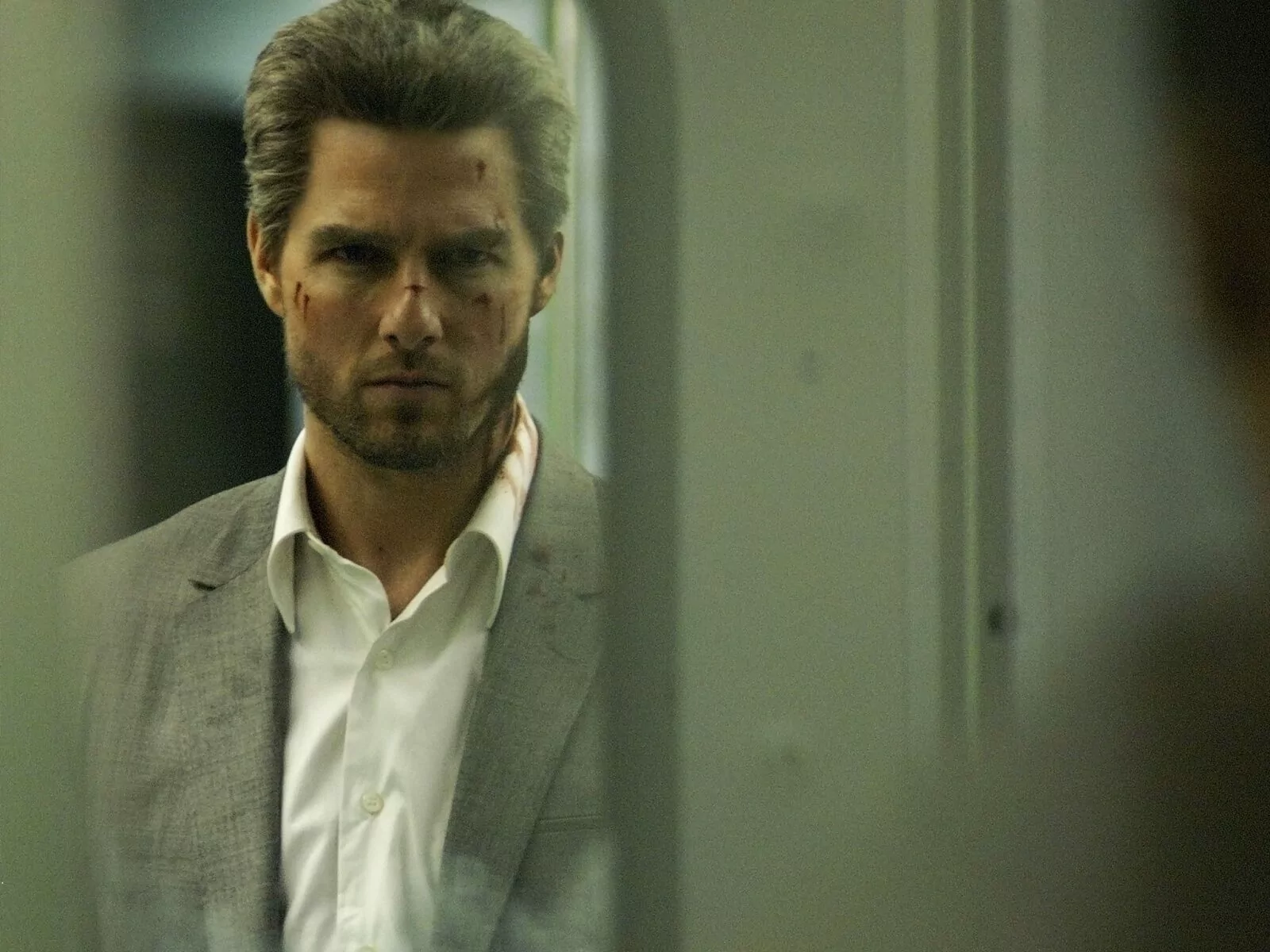
Far from being a generic Tom Cruise hitman movie
Vincent is the physical embodiment of drive and follow-through; an ordered, destructive force who comes crashing into Max’s life. Vincent does just as much to terrorize the cabbie as he does to motivate internal growth in him as a by-product of rigorous if dubious morality and meddling curiosity.
Vincent, played by a top-of-his-game Tom Cruise in Collateral, is a hitman attempting the impressive feat of executing five targets over the course of a single night. The Cruise + Foxx duo would be enough to solidify the Collateral movie cast, but there are also supporting roles for Jada Pinkett Smith, Mark Ruffalo, and Javier Bardem.
Vincent enlists Max as his personal chauffeur for the night, at first through bribery and later through force. As the hits progress, Max is drawn deeper and deeper into the criminal underworld of Los Angeles. This video excellently breaks down this relationship between protagonist and antagonist and the way Collateral tackles it.
Video essay examining the BAFTA nominated Collateral film script
This is a supremely stylish film. In Collateral, Michael Mann’s trademark visual flair is at its peak. The “neon-noir” aesthetic that Mann first played around with in his debut feature, Thief from 1981, is refined to near-perfection in Collateral. The “cool factor” is through the roof. For more movies like Collateral, take a look at our list of the best Neo-Noir films.
Tom Cruise Collateral film
Collateral is contained yet sprawling
The scope of the movie Collateral is at once both largely sprawling and remarkably contained. The majority of the Collateral film is spent within the tight confines of an LA taxicab with our two main characters, and the entire Collateral movie cast consists of just three or four major players.
So, how does such as a restrained setup manage to play out in a way that feels grand in scale?
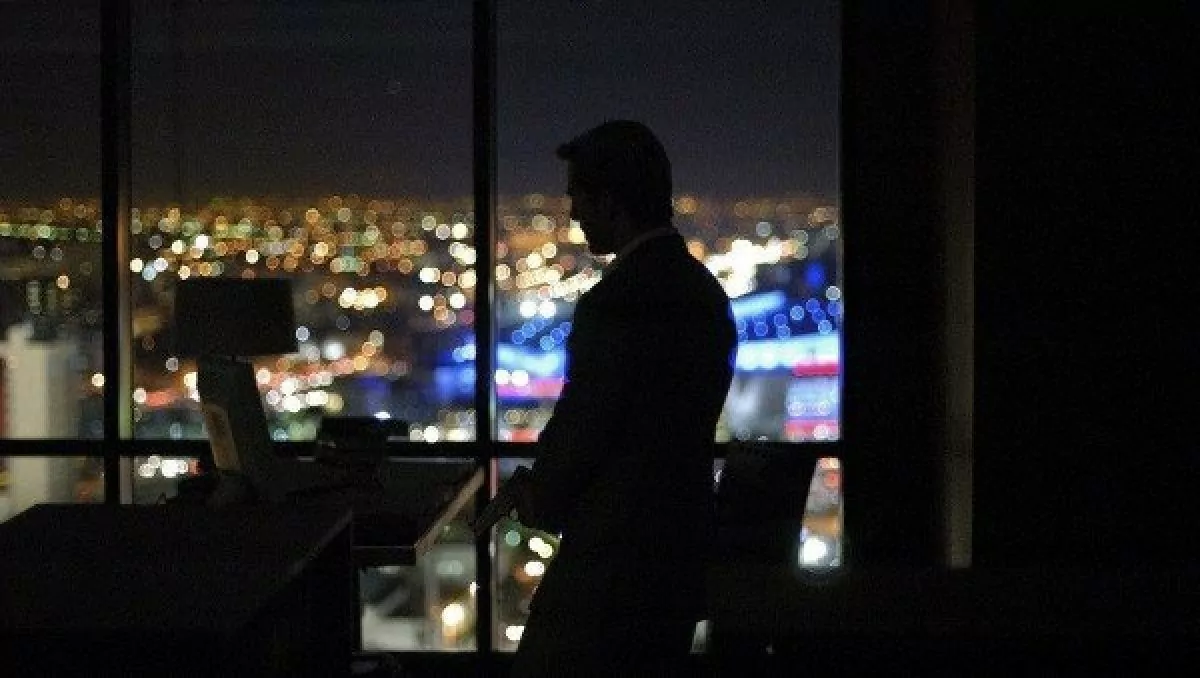
Tom Cruise in Collateral movie • Beautiful bokeh of LA lights
The Collateral movie functions as a tour of Los Angeles by night. From the empty sodium vapor streets to the neon-bathed bokeh, gang-run nightclubs, Collateral revels in showcasing the seedier side of Los Angeles that often goes unexplored on camera. Check out our rundown of unique filmmaking locations around LA that you can make use of in your own filmmaking projects.
To hear Michael Mann himself discuss the locations and other aspects, check out this behind the scenes on the making of Collateral.
Thorough behind the scenes documenting of Collateral
The location scouting step of Pre-Production is extremely important to Michael Mann’s creative process. He shoots as much as possible on-location rather than on sets. Mann is known to film pieces of an individual scene across a dozen different locations, combining them in the edit into the ideal location to suit his directorial vision.
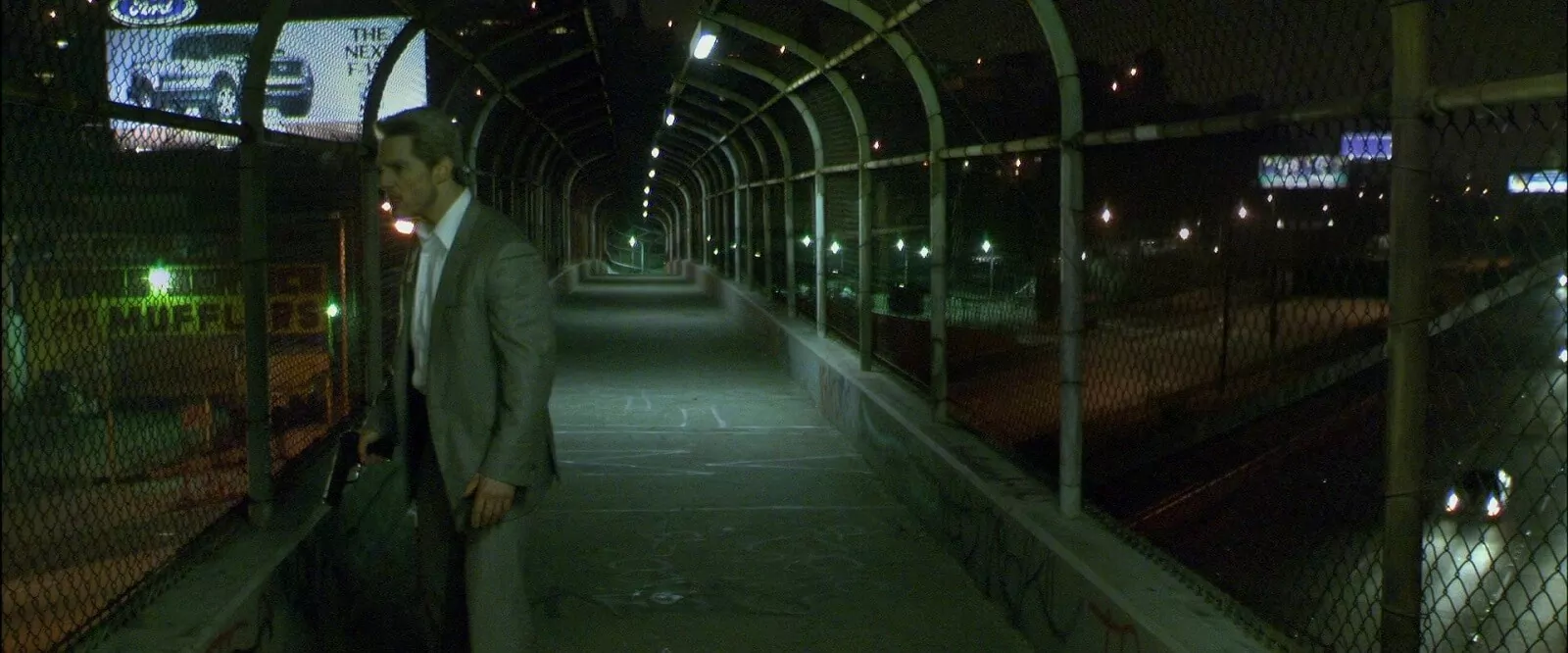
Mann found the perfect overpass for this Collateral movie scene
The texture of a location informs character, tone, and substance in Mann’s films. With LA previously in Heat or in Chicago for Thief, the moonlit city streets as viewed through the cab’s windows are a real highlight of the Collateral film.
Related Posts
Tom Cruise hitman movie - Collateral 2004
The action: quality over quantity
For an action-thriller, the amount of action in Collateral is certainly on the low side. One could argue that the premise of a hitman carrying out five executions in a single night should make for more action, but what action is there, is expertly handled. For a rundown of great action films, check out the best action films ever made.
In Collateral, Michael Mann takes a "quality over quantity" approach to action sequences. Mann’s films might not be full of straight-up action films, but he has proven himself to be a master of the cinematic gunfight.
His magnum opus of action scenes, the street-bound cops vs robbers battle in Heat, stands tall as one of best, if not the best, action shootouts of all time. Collateral and Heat both made it onto our list of the best crime films. See what other movies like Collateral made the cut.
None of the action in Collateral is as big or jaw dropping as the centerpiece shootout in Heat. But Mann transferred his experiences making Heat into a smaller, more compact form that suits the story of the movie.
While making Heat, Mann realized that he preferred the diegetic sound of the real blanks being fired on the crowded LA streets over anything his sound designers could whip up. The authentic audio captured of the deafening gun blasts echoing off the high-rises was unlike any previously heard movie gunshots.
This added a new layer of realism and bombastic intensity to Heat, a layer which Mann carried over into the sound design of Collateral.
Tom Cruise as Vincent • Dispatching thugs with extreme efficiency
The action is both sparse and brief but carried out with a strong sense of realism that it is felt by the audience in a visceral way. The shootouts are short and punchy and more realistic than 99% of action films. Mann enlisted the same weapons and tactics trainer that he used in preparing the cast for Heat to train Tom Cruise in Collateral.
Cruise trained with live ammunition and rehearsed the choreography relentlessly for three months prior to shooting. All of that preparation truly paid off in the way he handles himself on camera.
Orchestrated chaos in a gang-run nightclub • Collateral (2004)
Mann’s extensive preparation regimens were put in place for the rest of the cast as well. Jamie Foxx spent countless hours driving with real cab drivers as well as practicing high-speed driving. And Mark Ruffalo, who plays a vice Detective, underwent similar extensive weapons training as Cruise, despite the fact his character never once fires his gun in the film.
Some of Mann’s directorial quirks and requirements could be labeled as excessive but, for him, it all builds to a heightened sense of authenticity in the character which is reflected in the performances.
Collateral movie ending
Expertly crafted, yet not flawless
Not all is perfect within Collateral. There are a few minor issues, such as a handful of odd soundtrack choices and a couple of moments where the picture quality is just a touch below ideal. This is most likely due to about 80% of the movie being shot on digital when it was still finding its footing. Mann even went as far as to claim that Collateral was one of the first movies to attempt a stylistic “look” using digital video.
There are a couple of more significant flaws in Collateral as well, unfortunately. While the performances never falter, there are a handful of exchanges between Max and Vincent that require a high level of suspension of disbelief. It could be a challenge to take in stride the expository chats between them when the conversation turns casual and the antagonism subsides.
The other major disappointment lies in the ending. While the closing line and final images are well handled, the overall ending concludes with a fizzle rather than a bang. It's a letdown in the action department, feels overly familiar and requires more suspension of disbelief.
The following video essay offers an alternate view of the ending and an exploration on the role of masculinity in Collateral.
Collateral movie ending and themes analysed by Storytellers
Luckily, these issues are nowhere near enough to hamper the overall effectiveness of the film.
Collateral film
Elevated by outstanding performances
While the plot of Collateral is tight and efficient, it isn’t the most daring or innovating script out there. Where the script excels is in the character department. It drills deeper into both the protagonist and the antagonist than one might expect from similar action-thriller films.
As a protagonist, Max is just complicated enough to be interesting and thoroughly likable. We want him to make it out of his unenviable situation and are on board for the escalating decisions he makes.
But for as good as Jamie Foxx is, the show is completely stolen by Tom Cruise as the villainous Vincent. This is without a doubt one of his best roles. The character on the page is already complex and intriguing, but Cruise adds multiple layers of depth and nuance that elevate the character and the film.
If there is a single reason to watch Collateral, it’s for Vincent.
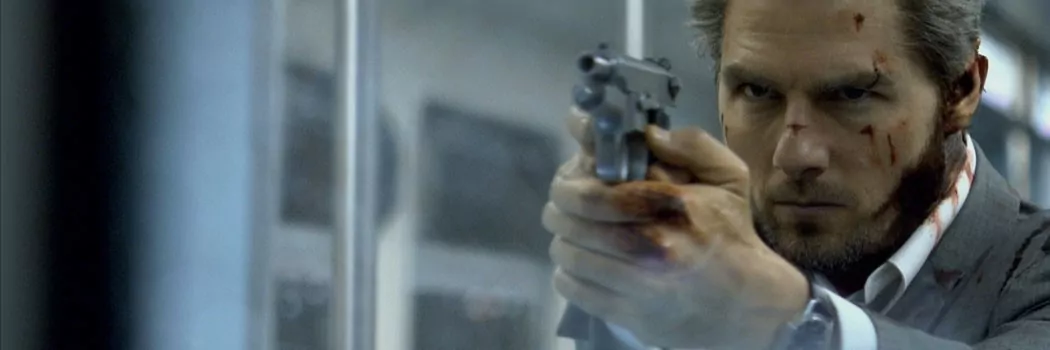
One of Cruise’s best performances
Collateral was a departure for both leads. The role of Max arrived at a time when Jamie Foxx was best known for his comedy, not a dramatic leading man. Collateral landed in theaters just two months before his Oscar-winning performance in Ray.
For Tom Cruise, Collateral was quite the departure as well. Usually the leading-man good guy, this is one of the few films where Cruise goes against type for the “bad guy” role. Cruise also had a makeover to his usual look as well, which helped him disappear into character.
This scene is a strong showcase for both actors, not just as individuals but as a two-hander. The push and pull between them displays great chemistry and the balance professional actors bring to their job.
A showcase for both actors
Michael Mann believes in understanding even the smallest details of a character’s life regardless of whether those details make it into the film or not. In Collateral, Michael Mann wrote extensive biographies for both Max and Vincent. These covered the characters’ entire lives up until the beginning of the film, complete with anecdotes from childhood and photographs of where they grew up. It’s a complex way to imbue potentially simple, surface-level characters with a great deal more depth.
UP NEXT
Road to Perdition Revisited
Collateral shines as one of the best films of the action-thriller sub-genre. The film’s legacy is well-deserved and it is essential viewing for any cinephile. If you enjoyed our look back at Collateral, then check out our revisiting of Sam Mendes’s Road to Perdition, a stylish Neo-Noir with memorable characters and set pieces.
